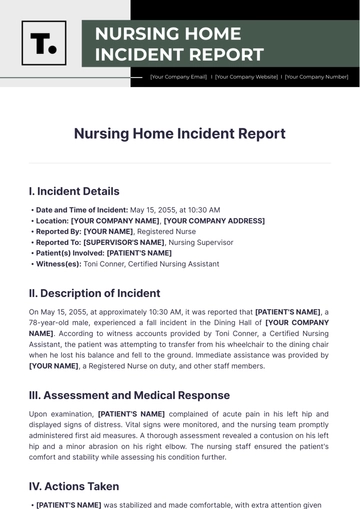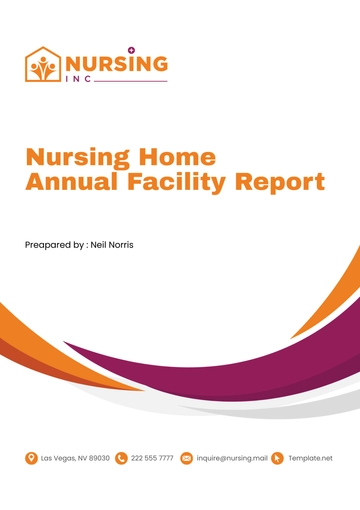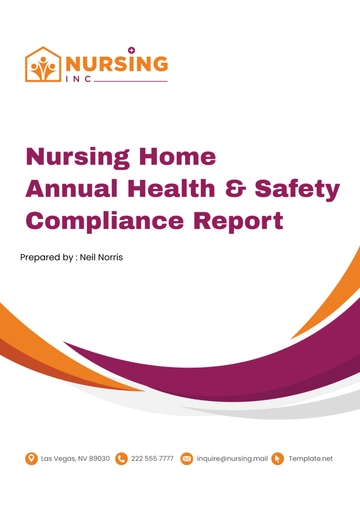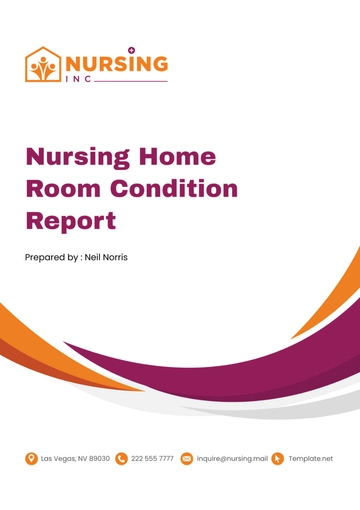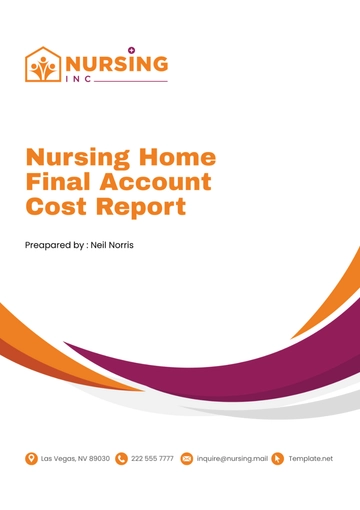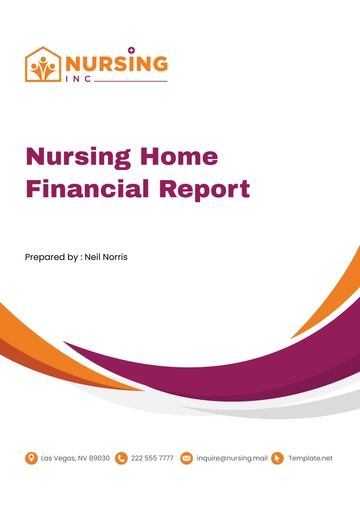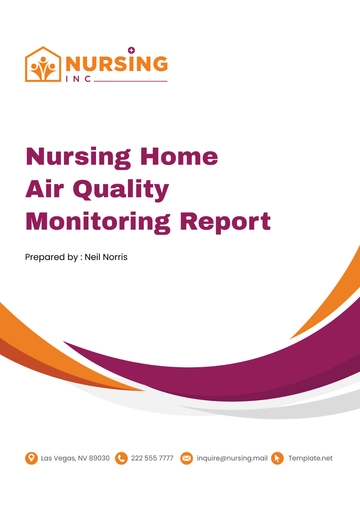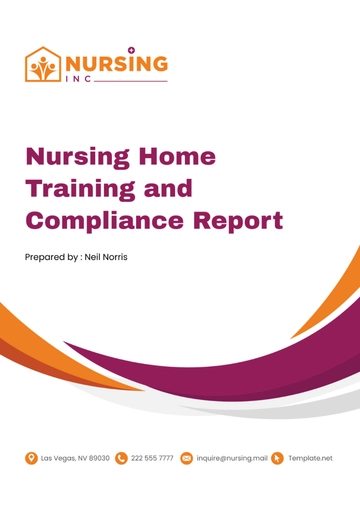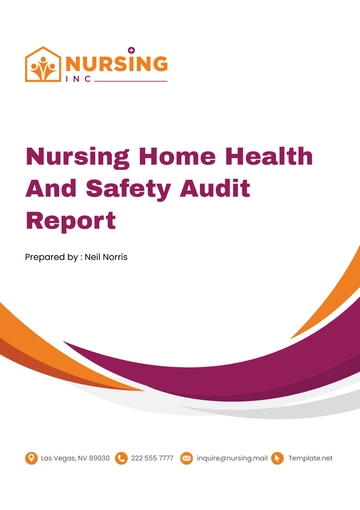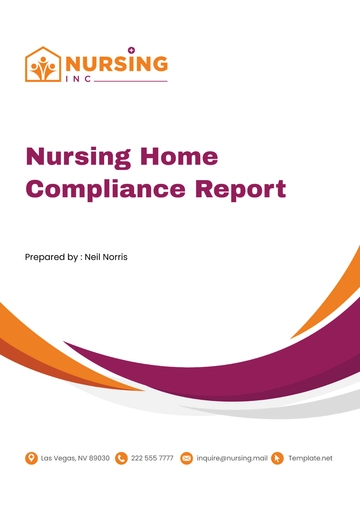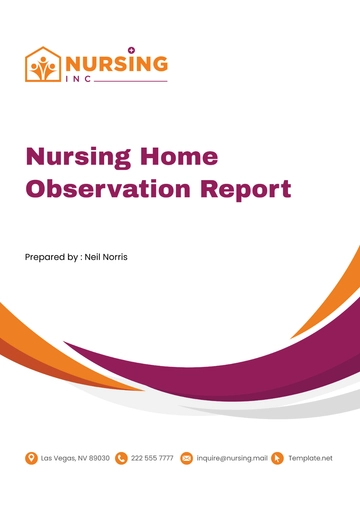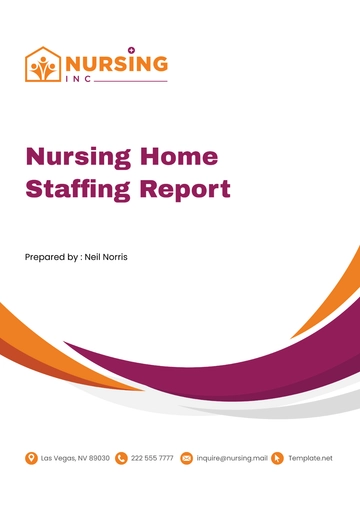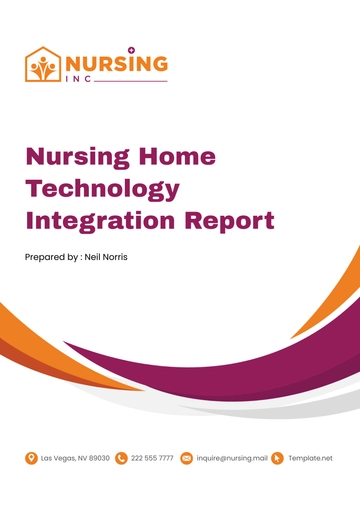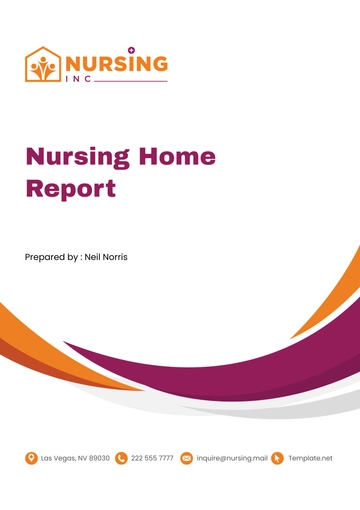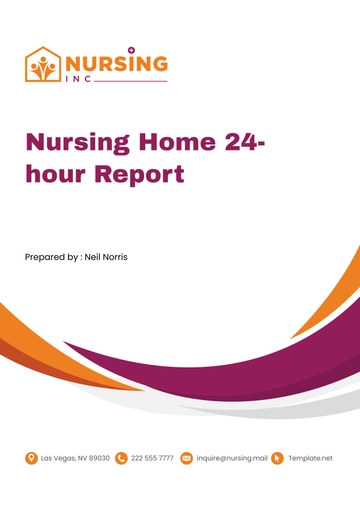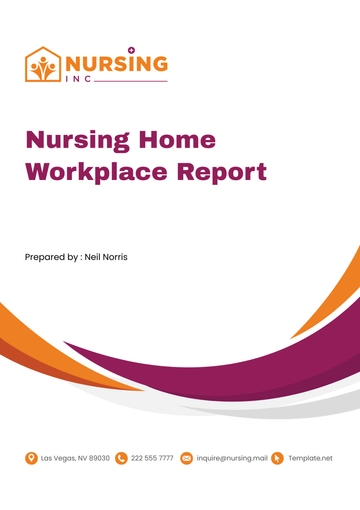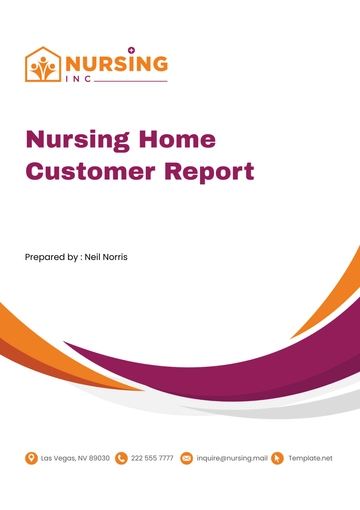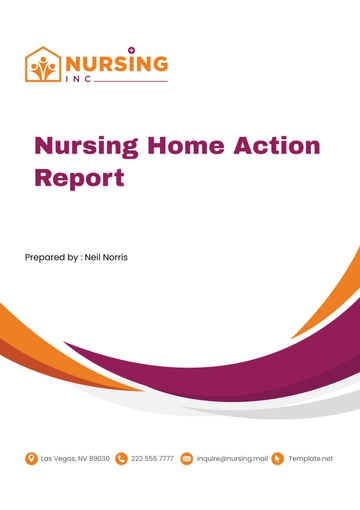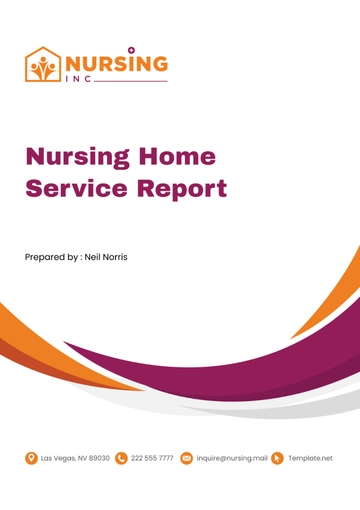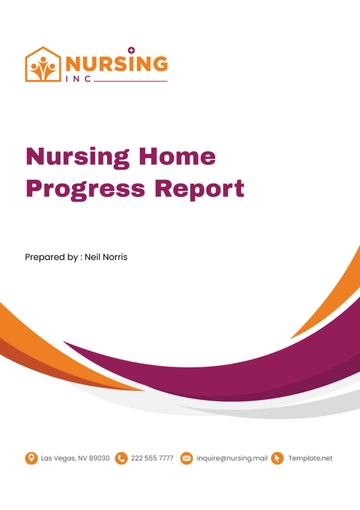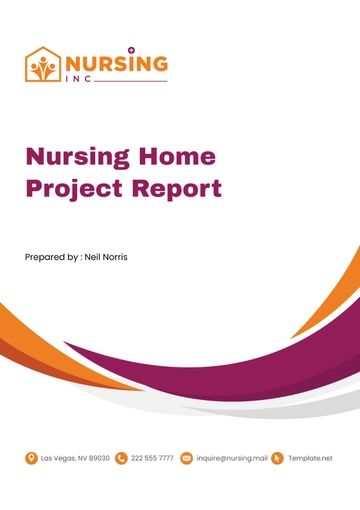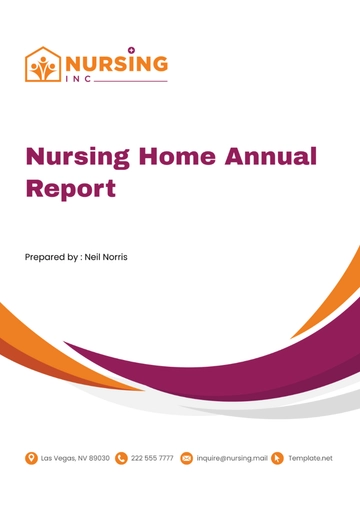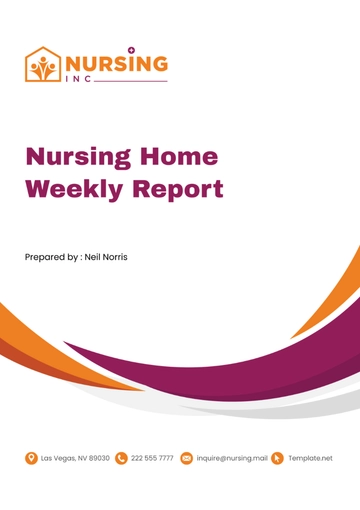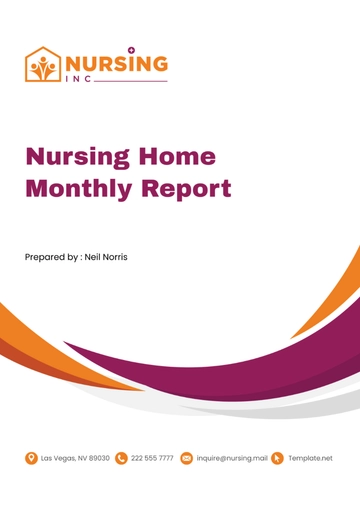Free Nursing Home Daily Report
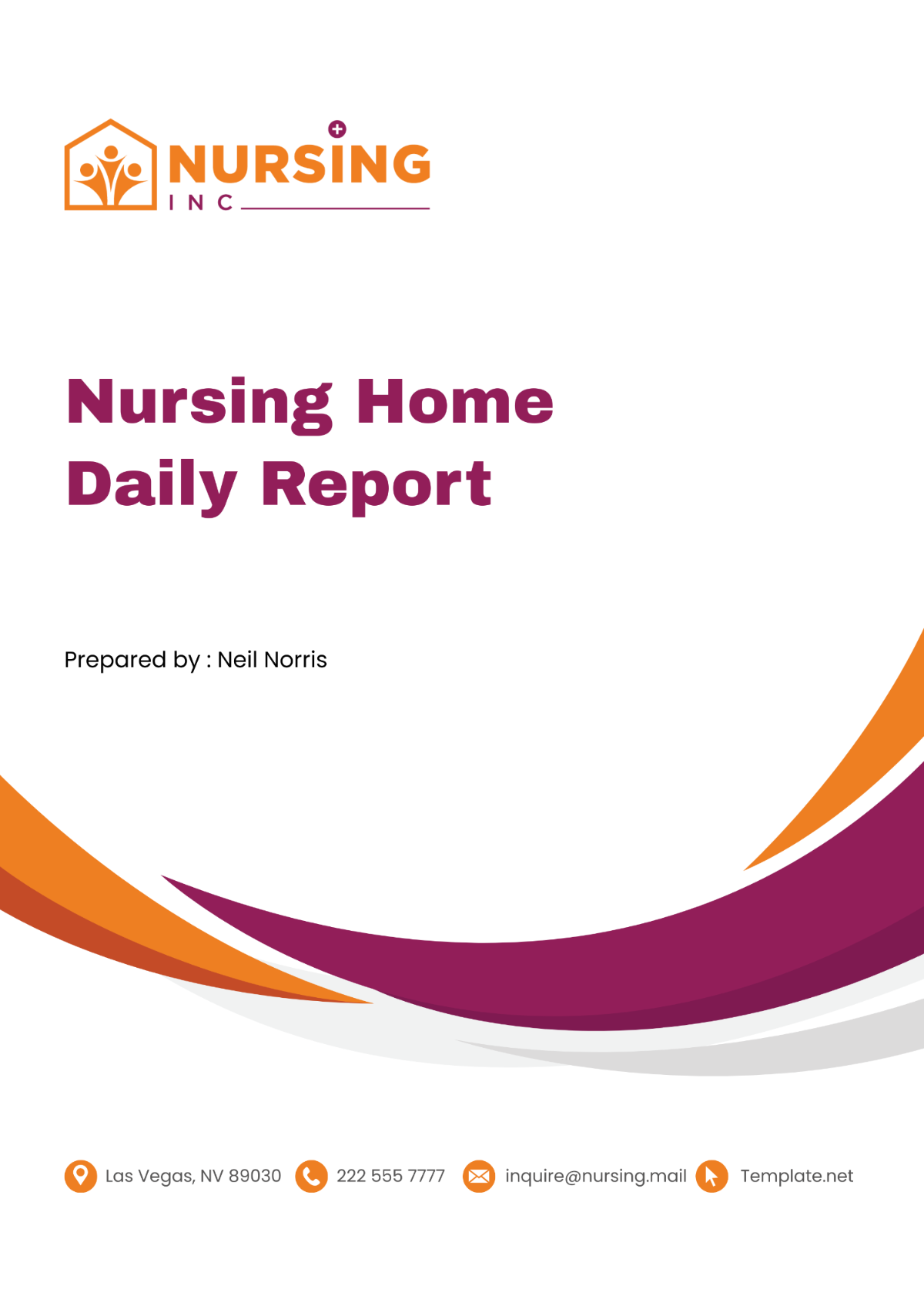
I. Resident Information
Attribute | Information |
|---|---|
Name | Mary Johnson |
Room Number | 205 |
Age | 85 |
Medical Conditions/ Special Needs | Dementia, Osteoarthritis, Hypertension |
II. Vital Signs
Vital Sign | Measurement |
|---|---|
Blood Pressure | 140/90 mmHg |
Temperature | 99.2°F |
Pulse Rate | 82 bpm |
Respiratory Rate | 18 bpm |
III. Medication Administration
Medication | Dosage | Time |
|---|---|---|
Donepezil | 5mg | 9:00 AM |
Ibuprofen | 200mg | 12:00 PM |
Lisinopril | 10mg | 3:00 PM |
IV. Dietary Information
Breakfast: Consumed half of her meal, including oatmeal and fruit juice.
Lunch: Ate all of her meal, including grilled chicken, steamed vegetables, and mashed potatoes.
Dinner: Declined dinner, citing a lack of appetite.
V. Activities of Daily Living (ADLs)
Bathing and Grooming: Mary Johnson required assistance with bathing and grooming due to limited mobility and cognitive impairment. A caregiver assisted her with bathing, ensuring her safety and comfort. Grooming activities such as hair brushing and nail care were also attended to during this time.
Dressing: Due to stiffness in her joints caused by osteoarthritis, Mary needed assistance with dressing. A caregiver helped her select appropriate clothing and ensured that garments were worn comfortably, taking into account any limitations in movement or discomfort.
Toileting: Mary required assistance with toileting due to her cognitive impairment. A caregiver provided support in navigating to the restroom, ensuring proper hygiene practices, and assisting with clothing adjustments as needed. Regular bathroom visits were encouraged to maintain Mary's comfort and prevent accidents.
Mobility Support: Mary used a walker for mobility assistance, particularly when moving around her room or engaging in activities within the facility. Caregivers were available to provide support and guidance as she navigated her environment, ensuring her safety and stability while walking.
Meal Assistance: Although Mary was able to feed herself independently, caregivers provided assistance during meal times to ensure she received proper nutrition and hydration. They monitored her eating habits, encouraged her to consume sufficient amounts of food and fluids, and assisted with cutting food or opening containers as needed.
Social Engagement: In addition to activities related to daily living, caregivers encouraged Mary to participate in social activities within the facility. They facilitated interactions with other residents, engaged her in conversations, and encouraged participation in group activities or recreational programs to promote socialization and mental stimulation.
Emotional Support: Recognizing the importance of emotional well-being, caregivers provided Mary with emotional support and companionship throughout the day. They engaged in conversation, listened to her concerns, and offered reassurance and encouragement. Building a trusting and supportive relationship with Mary was prioritized to enhance her overall quality of life.
Medication Reminders: Caregivers reminded Mary to take her medications according to the prescribed schedule, ensuring adherence to her treatment plan. They provided assistance with medication administration as needed, monitoring for any adverse reactions or side effects and communicating any concerns to the healthcare team.
Environmental Safety: Caregivers ensured that Mary's environment was safe and conducive to her well-being. They conducted regular safety checks, removing any hazards or obstacles that could pose a risk of falls or accidents. Measures such as proper lighting, clear pathways, and appropriate furniture arrangement were implemented to enhance Mary's safety and comfort.
VI. Mobility and Exercise
Physiotherapy Session: Participated in a 30-minute physiotherapy session in the morning to improve mobility and flexibility.
Walking: Walked with the assistance of a walker for 10 minutes in the afternoon as part of her exercise routine.
VII. Medical Concerns or Changes
Physiotherapy Session: Mary participated in a 30-minute physiotherapy session in the morning to improve mobility and flexibility. The session included a combination of stretching exercises, range of motion exercises, and strengthening exercises tailored to Mary's individual needs. A qualified therapist supervised the session, providing guidance and support to ensure proper technique and maximize the therapeutic benefits.
Walking with Assistance: Mary engaged in walking exercises with the assistance of a caregiver and a walker. Caregivers supported Mary as she walked around the facility, providing stability and guidance to prevent falls and promote safe movement. The walking sessions typically lasted for 10 to 15 minutes, depending on Mary's stamina and comfort level. These exercises aimed to improve Mary's endurance, balance, and overall mobility.
Chair Exercises: In addition to walking, Mary participated in chair exercises to strengthen her muscles and improve her range of motion. Caregivers led these exercises, which involved seated movements such as leg lifts, arm circles, and toe taps. Chair exercises provided Mary with a low-impact workout option that could be performed safely within the confines of her room or communal areas, promoting physical activity and reducing the risk of sedentary behavior.
Balance Training: Mary engaged in balance training exercises to enhance her stability and reduce the risk of falls. These exercises focused on improving proprioception, coordination, and postural control through activities such as standing on one leg, heel-to-toe walking, and weight shifting exercises. Caregivers closely monitored Mary during balance training sessions, providing support and encouragement as needed to help her maintain proper form and balance.
Use of Mobility Aids: Mary utilized mobility aids such as a walker or cane to support her during exercises and daily activities. Caregivers ensured that Mary's mobility aids were properly adjusted and fitted to her height and comfort preferences, optimizing their effectiveness in providing support and stability. They also provided instruction on safe usage and proper technique to help Mary navigate her environment with confidence and independence.
Individualized Exercise Plan: Mary's exercise regimen was tailored to her specific needs, abilities, and goals. A multidisciplinary team, including therapists, nurses, and caregivers, collaborated to develop an individualized exercise plan that addressed Mary's mobility challenges and rehabilitation objectives. Regular assessments and adjustments were made to the exercise plan based on Mary's progress and feedback, ensuring that her interventions remained effective and appropriate over time.
Fall Prevention Strategies: In addition to exercise, caregivers implemented fall prevention strategies to minimize the risk of accidents and injuries. They ensured that Mary's environment was free of hazards such as loose rugs or clutter, and they provided assistance and supervision during activities that posed a higher risk of falls, such as walking or transferring from one surface to another. By addressing both physical and environmental factors, caregivers aimed to create a safe and supportive environment that promoted Mary's mobility and independence while reducing the likelihood of falls.
VIII. Incidents or Accidents
No incidents or accidents were reported during the day.
IX. Family Communications
During the afternoon shift, Mary Johnson's daughter, Sarah, visited the facility to check on her mother's well-being. Sarah was briefed on Mary's daily activities, medication administration, and overall health status. Sarah expressed gratitude for the care provided and requested updates on any changes in Mary's condition.
X. Recommendations or Follow-up
Monitor Blood Pressure: Continue to monitor Mary Johnson's blood pressure regularly, especially considering her hypertension. Ensure proper documentation and communication of any significant changes.
Nutritional Assessment: Schedule a nutritional assessment for Mary Johnson to address her decreased appetite and ensure she receives adequate nutrition.
Fall Prevention Measures: Implement additional fall prevention measures for Mary Johnson, including ensuring her environment is free of obstacles and providing assistance during activities that require mobility.
- 100% Customizable, free editor
- Access 1 Million+ Templates, photo’s & graphics
- Download or share as a template
- Click and replace photos, graphics, text, backgrounds
- Resize, crop, AI write & more
- Access advanced editor
Streamline daily reporting in nursing home facilities with Template.net's Nursing Home Daily Report Template. Easily editable in our AI Editor Tool, this customizable template provides a structured format for documenting daily activities, incidents, and observations within the facility. Enhance communication, track progress, and ensure transparency with the use of our template!
You may also like
- Sales Report
- Daily Report
- Project Report
- Business Report
- Weekly Report
- Incident Report
- Annual Report
- Report Layout
- Report Design
- Progress Report
- Marketing Report
- Company Report
- Monthly Report
- Audit Report
- Status Report
- School Report
- Reports Hr
- Management Report
- Project Status Report
- Handover Report
- Health And Safety Report
- Restaurant Report
- Construction Report
- Research Report
- Evaluation Report
- Investigation Report
- Employee Report
- Advertising Report
- Weekly Status Report
- Project Management Report
- Finance Report
- Service Report
- Technical Report
- Meeting Report
- Quarterly Report
- Inspection Report
- Medical Report
- Test Report
- Summary Report
- Inventory Report
- Valuation Report
- Operations Report
- Payroll Report
- Training Report
- Job Report
- Case Report
- Performance Report
- Board Report
- Internal Audit Report
- Student Report
- Monthly Management Report
- Small Business Report
- Accident Report
- Call Center Report
- Activity Report
- IT and Software Report
- Internship Report
- Visit Report
- Product Report
- Book Report
- Property Report
- Recruitment Report
- University Report
- Event Report
- SEO Report
- Conference Report
- Narrative Report
- Nursing Home Report
- Preschool Report
- Call Report
- Customer Report
- Employee Incident Report
- Accomplishment Report
- Social Media Report
- Work From Home Report
- Security Report
- Damage Report
- Quality Report
- Internal Report
- Nurse Report
- Real Estate Report
- Hotel Report
- Equipment Report
- Credit Report
- Field Report
- Non Profit Report
- Maintenance Report
- News Report
- Survey Report
- Executive Report
- Law Firm Report
- Advertising Agency Report
- Interior Design Report
- Travel Agency Report
- Stock Report
- Salon Report
- Bug Report
- Workplace Report
- Action Report
- Investor Report
- Cleaning Services Report
- Consulting Report
- Freelancer Report
- Site Visit Report
- Trip Report
- Classroom Observation Report
- Vehicle Report
- Final Report
- Software Report
